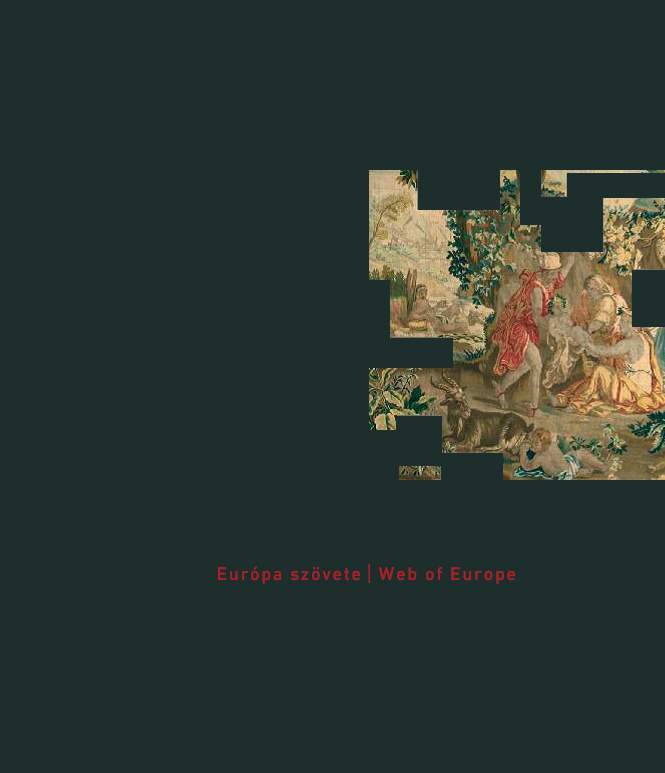
|
|
|
|
Web of Europe / Contemporary paraphrases of an eighteenth-century Brussels tapestry
|
Editors: Ibolya Hegyi, Katalin Schulcz
Authors: Edit András, Ibolya Hegyi, Miklós Mojzer, Katalin Schulcz,
Réka Semsey, Imre Takács
Translation: Kathy Mikitin, Chris Sullivan
Design: Johanna Bárd
Photographs: Philip Donner, UNICO ARTE BT
Editor-in-Chief: Imre Takács, Director-general Museum of Applied Arts, Budapest
Miklós Mojzer, President of the Ildikó Dobrányi Foundation
Print: Mester Nyomda Kft
ISBN 978-963-08-1101-9
|
| A creative process based on known European tapestry artists, this project was launched by the Budapest-based
Ildikó Dobrányi Foundation in conjunction with the Hungarian Cultural Institute in Brussels. As a result of it, the
work Web of Europe, an unusual, jointly woven tapestry from the twentieth-first century, has been made for the
period of Hungary’s presidency of the European Union, namely for the first six months of 2011. The work will be
on display to the general public at the Musées Royaux d’Art et d’Histoire in Brussels from 20 May until 14
August 2011 and later on, in the autumn of 2011, at the Museum of Applied Arts in Budapest. It has never been a
secret that the intention of this initiative is to direct attention, on a European scale, to the art of woven tapestry,
which is not simply a part of our common European heritage meriting esteem and preservation, but also,
simultaneously, a living, inspirational cultural medium, an exciting genre of contemporary art capable of ongoing
renewal. |
| The basis for this collective composition was the eighteenth-century Brussels tapestry Mercury Hands over the
Infant Bacchus to the Nymphs which is kept at the Museum of Applied Arts in Budapest and was cut out virtually
and reinterpreted and re-weaved by twenty-seven artists: Maria Almanza (Belgium), Wanda Balogh (Hungary),
Anet Brusgaard (Denmark), Nora Chalmet (Belgium), Paola Cicuttini (Belgium), Gabriela Cristu Sgarbura
(Romania), Muriel Crochet (France), Thomas Cronenberg (Germany), Adél Czeglédi (Hungary), Wlodzimierz
Czygan (Poland), Emese Csókás (Hungary), Ariadna Donner (Finland), Emöke (France), Martine Ghuys
(Belgium), Peter Horn (Germany), Anne Jackson (Great Britain), Feliksas Jakubauskas (Lithuania), Aino
Kajaniemi (Finland), Ieva Krumina (Latvia), Maria Kirkova Tzanova (Bulgaria), Federica Luzzi (Italy), Andrea
Milde (Spain), Susan Mowatt (Great Britain), Judit Nagy (Hungary), Sarah Perret (France), Renata Rozsivalova
(Czech Republic), and Gizella Solti (Hungary). The idea started out from the observation that for the
reconstruction of an art object of the past that has come to light only as fragments, a basis is provided by those of
its parts that have remained intact. Since in the present case the work in question was (fortunately) complete when
filling out the imaginary missing parts the artists, were able to weave excerpts that to all intents and purposes
could be put back in the original. The number of the parts artificially taken out, and the number of artists, refers to
the number of member-states in the European Union. (www.webofeurope.eu) |
Musées Royaux d’Art et d’Histoire, Brussels 20 May 2011-14 August 2011
Museum of Applied Arts Budapest 13 October-2011-27 November 2011 |
| |
|